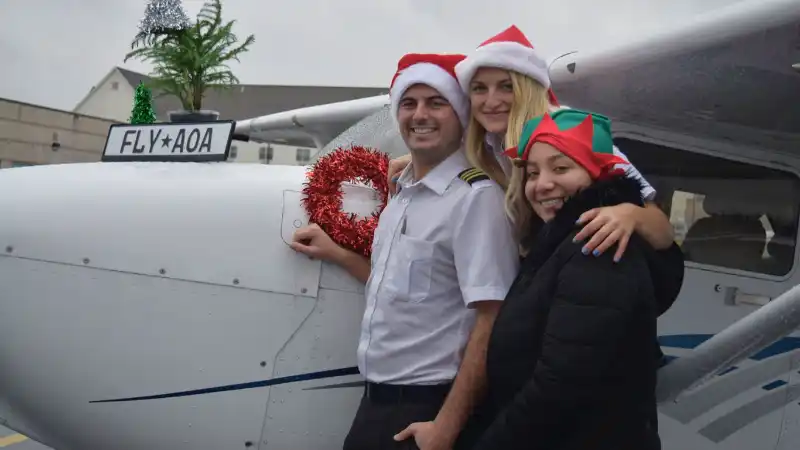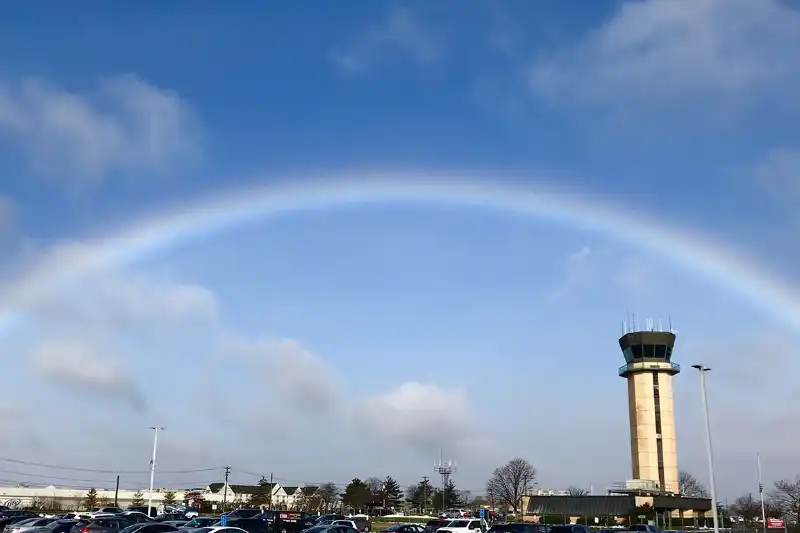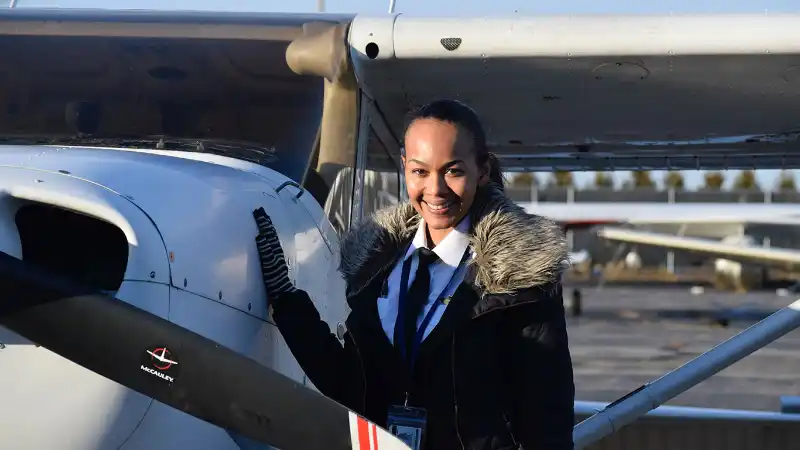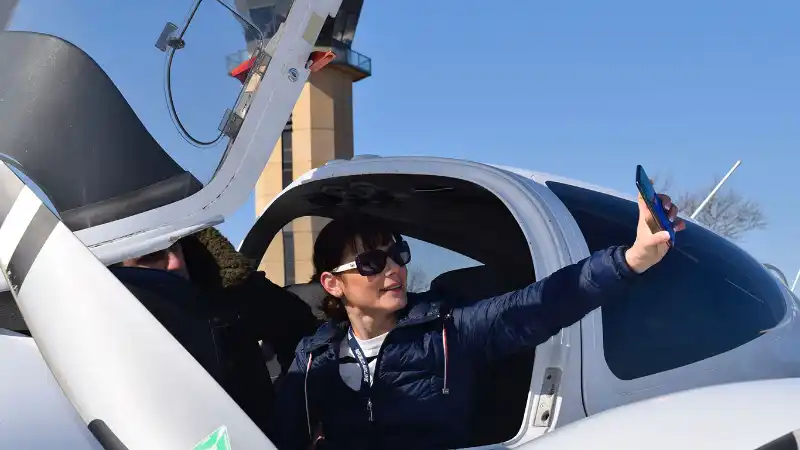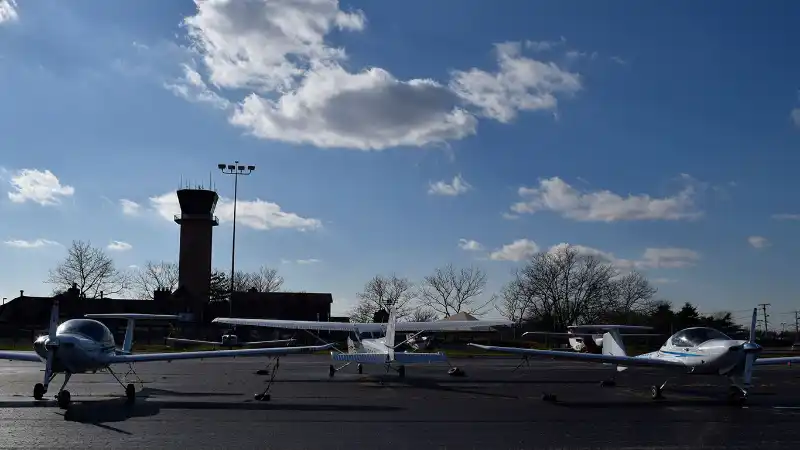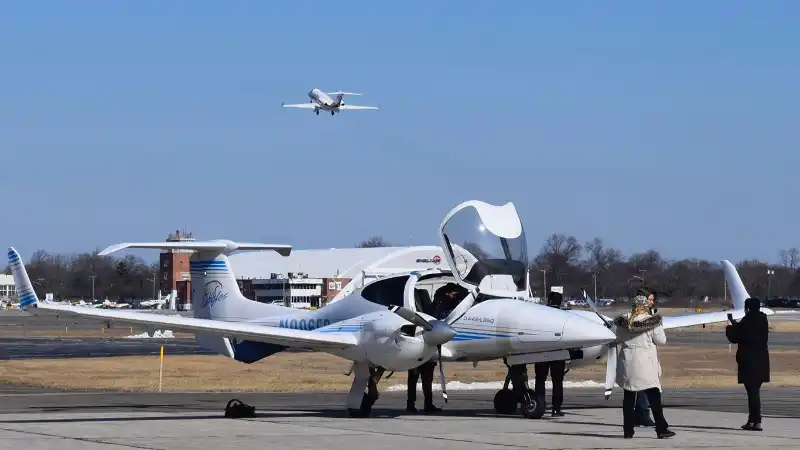Weather Control
Winter Flying
A response blog about learing to fly in winter in New York.
We usually don't like to give attention to Facebook/social media spamming/trolling/baiting
comments, but one that we received this week hit home (literally!) and i wanted to write up
a post describing in detail how and why we responded.
Academy of Aviation in Farmingdale, NY in the middle of winter.
The Importance
We usually don't like to give attention to Facebook/social media
spamming/trolling/baiting
comments, but one that we received this week hit home (literally!) and i wanted to write
up
a post
describing in detail how and why we responded.
We posted a job opening
about needing Flight Instructors, which, incidentally, we still do (especially at our
Westchester County
Airport location) and it was shared to a flight school student in a warmer country who
commented:
"Hahha... New York! There is no flying 6 months due to snow and freezing temp [ . . . ]
Lol".
I of course understand that this was a baiting comment, and I am also unsure of why someone
would take
their valuable time to spam/troll on our community page, but I also wanted to take the
opportunity to
actually give credence to this person's statement and suss out some responses.
I responded as follows:
"On the contrary, we are open and flying all year round, and there are actually certain
benefits
that come
with getting a full flight school education that includes learning to fly in winter months.
Some
of the
benefits of training in the winter in New York include real-time learning about winter
preflighting,
engine preheating, de-icing procedures, taking off in snowy conditions, crosswind landings,
assessing
weather conditions and go-arounds and learning how to visually inspect the aircraft in real
weather - and
when to postpone flying altogether. We have had very mild winters here recently with only a
couple of
recent snow days, but if the snow is too much to fly in, you can use that time for ground
school, sim and
classroom study.
Mechanically, the cold is not so bad; in fact, airplane engines produce more power when they
take off in
cold air. You can feel more power, thrust and performance-- experiences that you would gain
during the
winter months flying in New York.
When you become a pilot, you will invariable have to tackle weather conditions of all kinds,
so
training
in an area that notably has all of these conditions built in will make you a better and a
safer
pilot.
One more benefit to winter flying -- there are less pleasure flights taking off from many of
the
smaller
airports, which means less traffic and more practice time for students."
...
I asked our head of operations if this was a suitable response, and he was happy with the
points
I made,
but added that the poster could also ask his instructor in his warmer country to teach him
how
to read the
weather reports from JFK, LaGuardia, and Newark and ask where he is in his training that he
doesn't know
that.
This brings me to the recognition that there is some trepidation when people think of flying
in
New York
in winter, and I'd like to bolster the points I made above as well as expand on them.
Flying in Summer vs. Winter
Thrillist asked a pilot about many different topics, and we'd suggest reading through the
whole
linked
article, but I'd like to quote one passage in particular:
"Safest season to fly in?
Bunn: It doesn't matter much. In summer, passengers encounter more turbulence associated
with storms. In
winter, storms do not build up vertically to cruise altitude. Overall, then, a bumpier
ride
is more
likely in summer than in winter. Though a bumpy ride isn't unsafe, many passengers feel
unsafe when the
ride gets rough."
"Every Question You've Ever Had About Flying, Answered by a Pilot"
-thrillist.com
Training for Everything
The Points Guy offered a commentary about flying in winter storms, and concluded that
training
and
planning is the most important aspect:
“Taking off or landing in a snowstorm can be challenging, but it's well within the
boundaries of
what we're trained for.”
"How
Do You
Fly in a Winter Storm? Pilots Explain How it Works" -thepointsguy.com
Gaining Experience
Flying Magazine presented a harrowing account of real winter flying (in Ohio/Indiana) where
the
winter
storms can be brutal.
"I also learned, as a friend is fond of saying, that there are some experiences that
are
available
only to those who are willing to have them."
"Flying Lessons: Once Upon a Winter" -flyingmag.com
Understanding the Weather
Flying Magazine comes at us again with an article to explain that if you understand and
approach
winter
weather with familiarity, you'll be a more informed and prepared pilot. And ultimately,
isn't
that why you
want to go to a well-rounded flight school to begin with?
"Winter comes to play with a long list of unpleasant traits, but with the proper
preparation,
planning and equipment (not to mention an abundance of caution), flying on those
shortest
days can be
profoundly rewarding. In fact, when you've pulled off a well-planned and carefully
executed
flight
despite the cold, the wind and the snow, you have done something to be proud of.
Moreover,
the lessons
learned about planning, preparation and risk management can be applied to your flying
every
season and
every day of the year."
"Winter
Flying:
Here's how to cut through the ice and muck and finally fly more this winter."
-flyingmag.com
Winter Weather Flying Tips
I'd like to also recognize Bret Koebbe of Student Pilot News, who compiled a list of tips
that
everyone
who pilot's an aircraft should read.
"As the season transitions from fall to winter and the temperature is consistently
below
freezing,
unique challenges are presented to pilots. Flight training doesn't need to stop in the
winter though; in
fact the colder months provide some great opportunities to expand your knowledge on
weather
and aircraft
operations in less than ideal conditions. There are other benefits too, including
improved
aircraft
performance and nearly unlimited visibility on clear days."
"Seven
winter weather flying tips" -aviationschoolsonline.comz
